Abstract
1. In cats, a venous long-circuit technique was used to measure the blood flows in the superior vena cava and the hepatic, renal and iliac segments of the inferior vena cava. The sum of these flows gave the venous return (minus coronary and bronchial flows). In further experiments using an electromagnetic flowmeter, flow in the portal vein and in the superior mesenteric and coeliac arteries was measured.
2. Approximately two-thirds of the hepatic blood flow is derived from the portal vein.
3. After block of conduction in the cervical region of the spinal cord, the proportions of the venous return coming from each region during the control periods were not significantly altered although the arterial pressure and total venous return were decreased.
4. Intravenous infusions of adrenaline caused an increase in venous return which was associated with a marked increase in hepatic blood flow. The increase in hepatic blood flow was due to an increase in flow in the superior mesenteric artery and portal vein. Flow in the coeliac artery remained unchanged. This response was unaffected by block of the cervical region of the spinal cord and by atropine or pentolinium.
5. Intravenous infusions of noradrenaline caused little change in venous return or regional blood flows. Small increases in superior mesenteric artery flow were occasionally seen and on cessation of the infusion a large but brief increase occurred. These facts suggest that noradrenaline has a similar action to adrenaline but this is masked by concomitant vasoconstriction.
Full text
PDF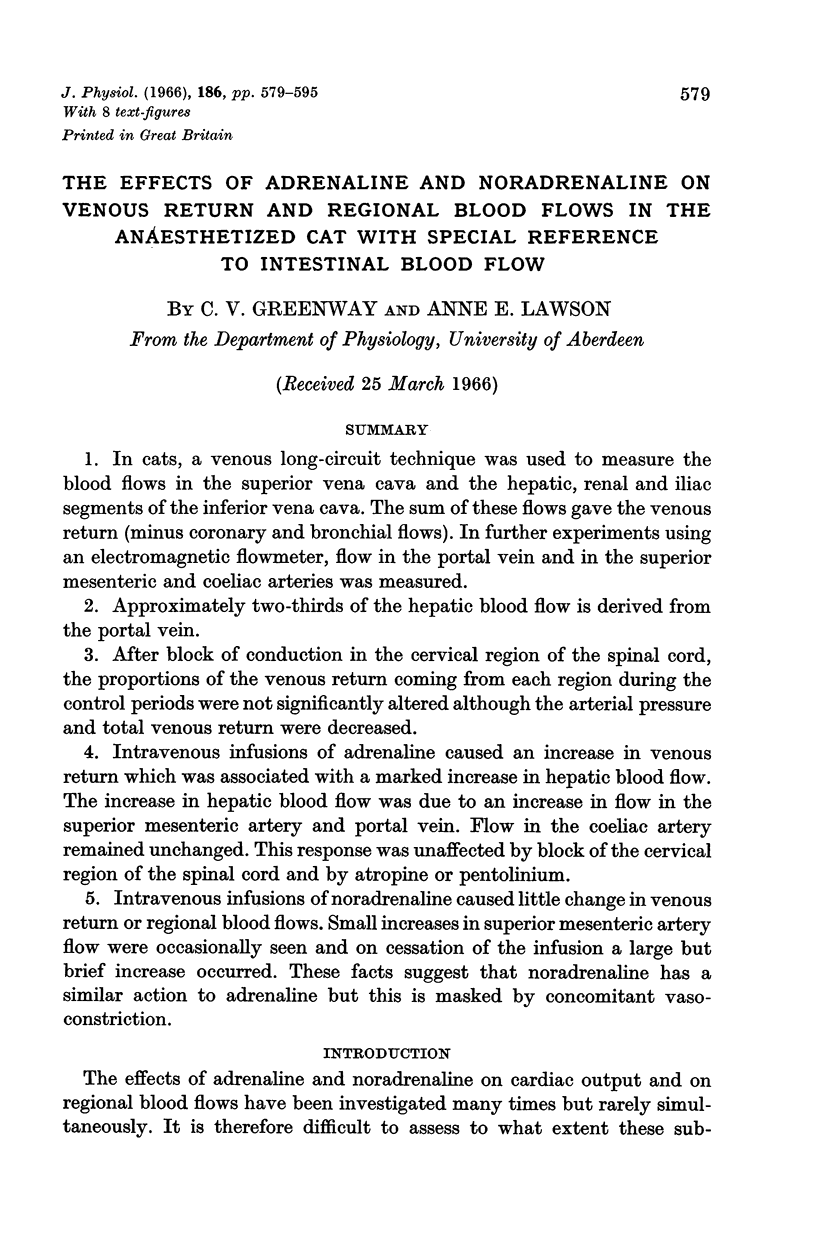
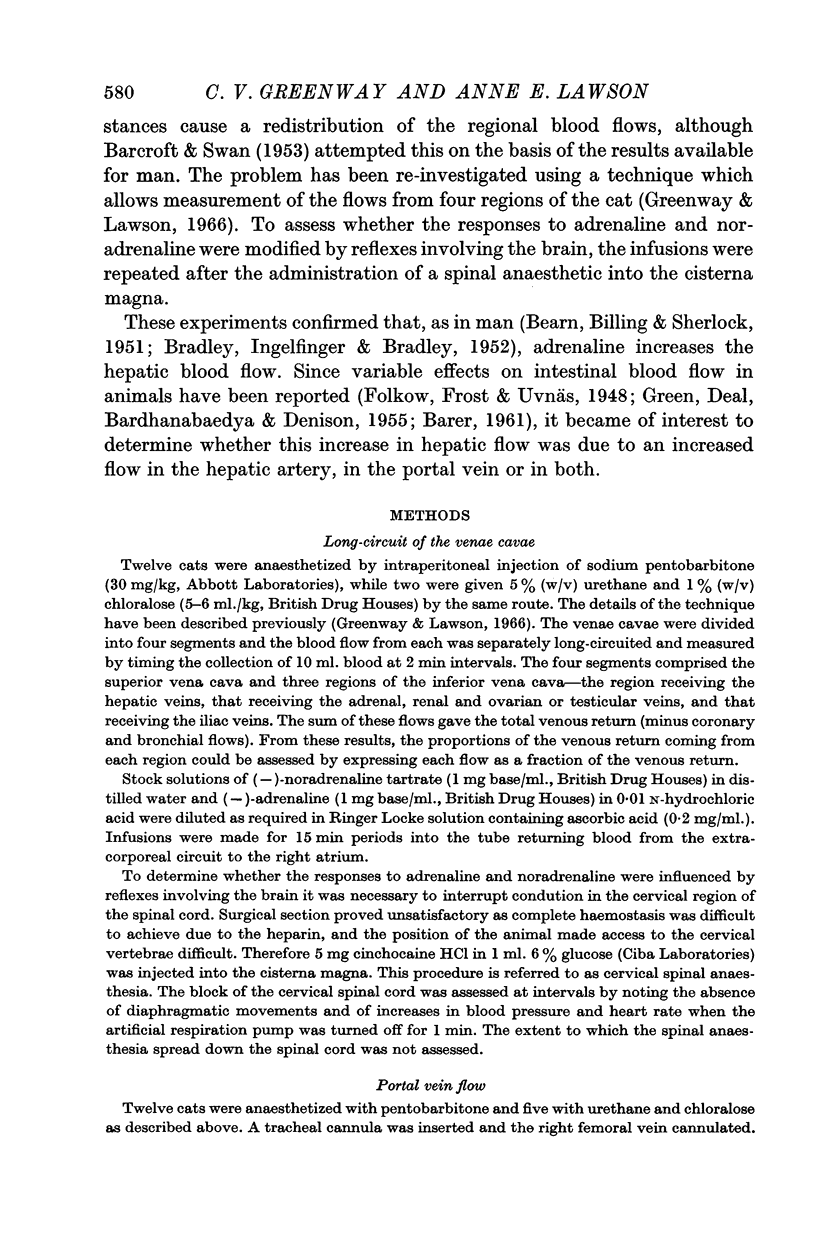
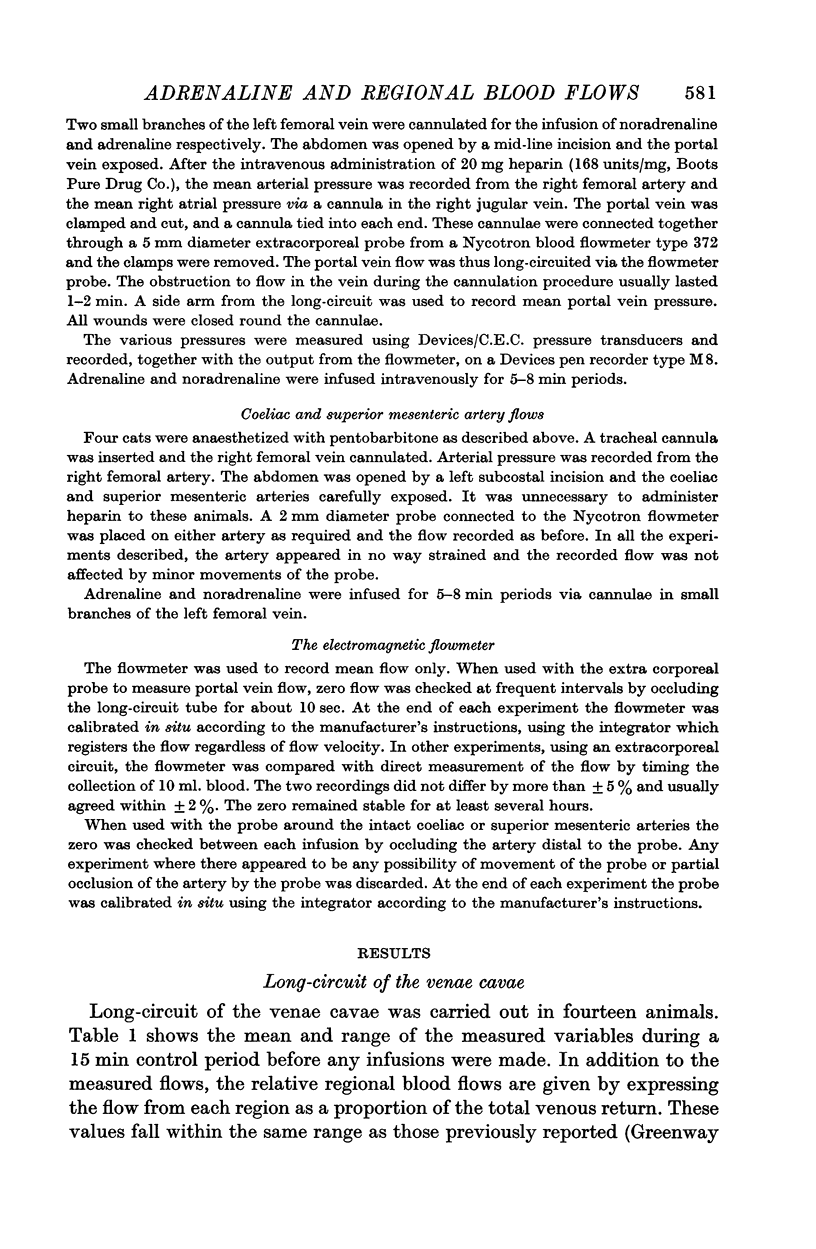
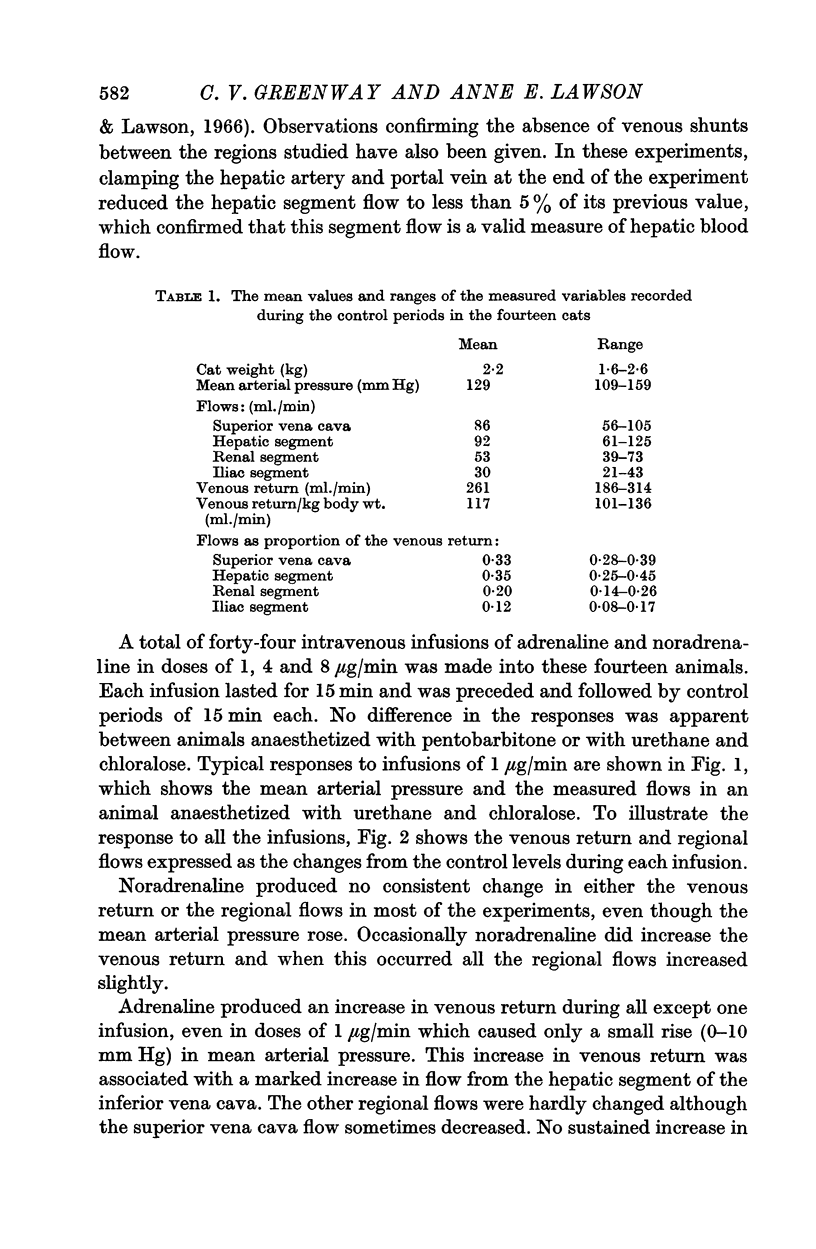
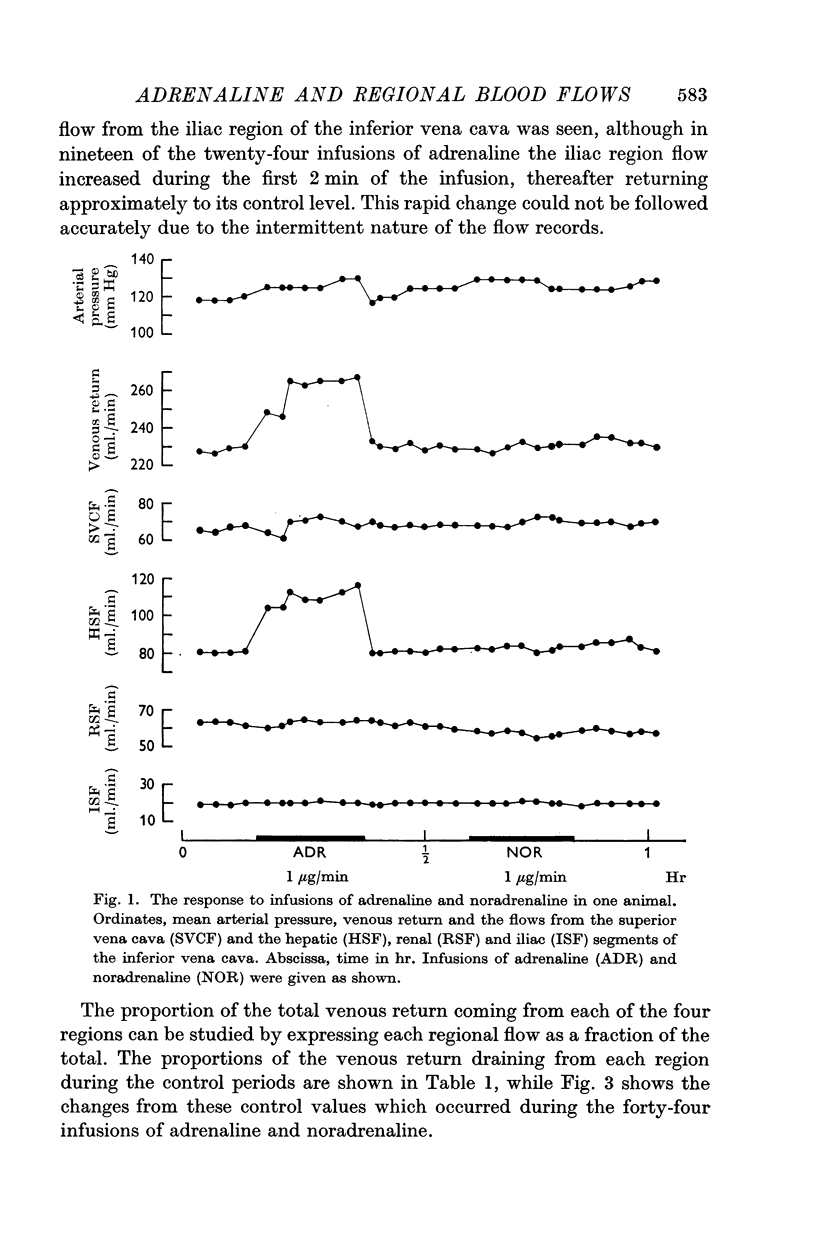
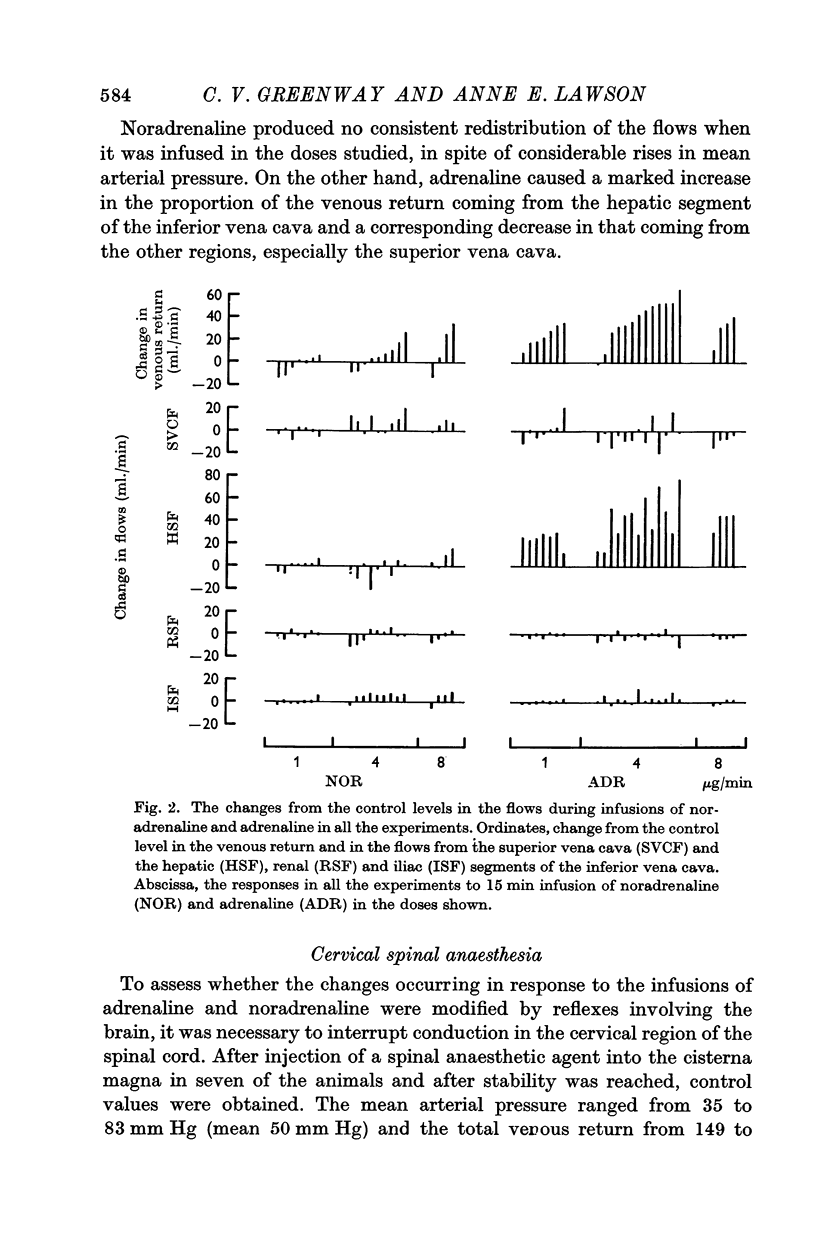
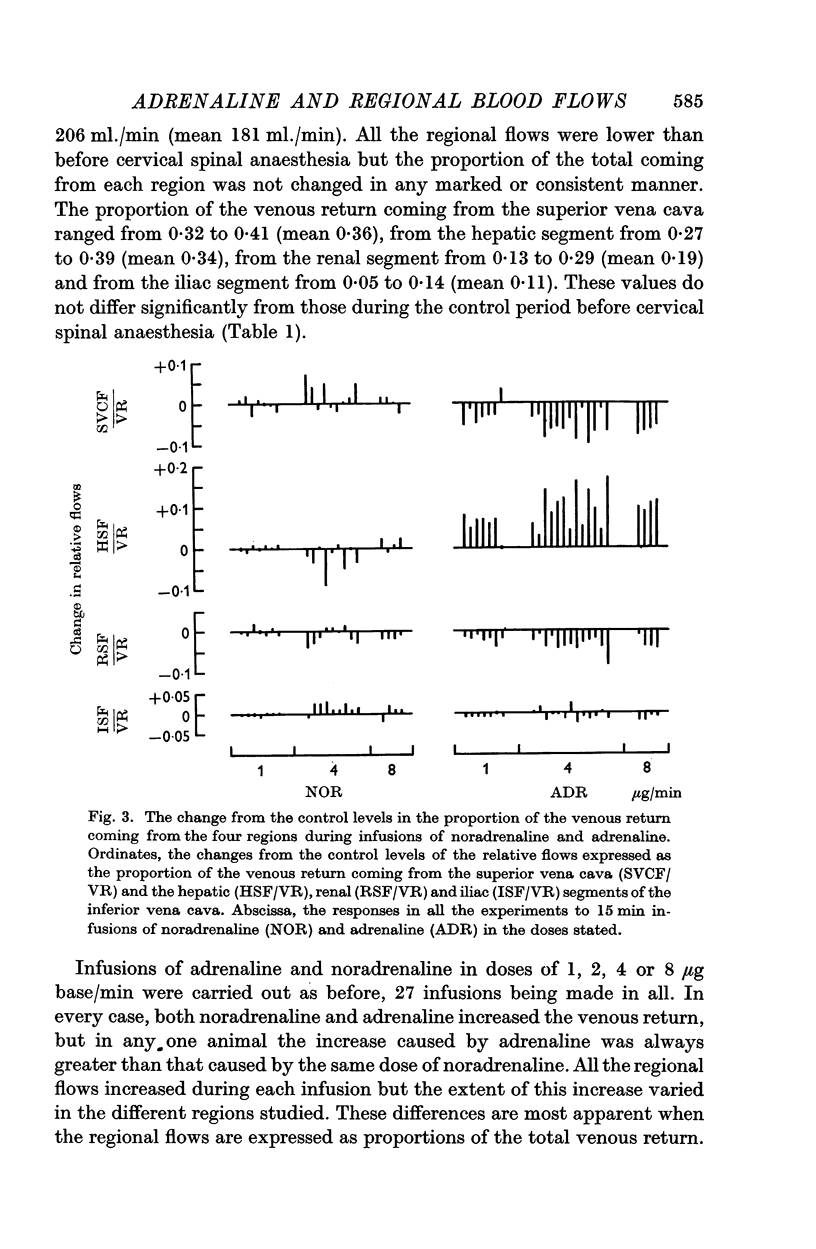
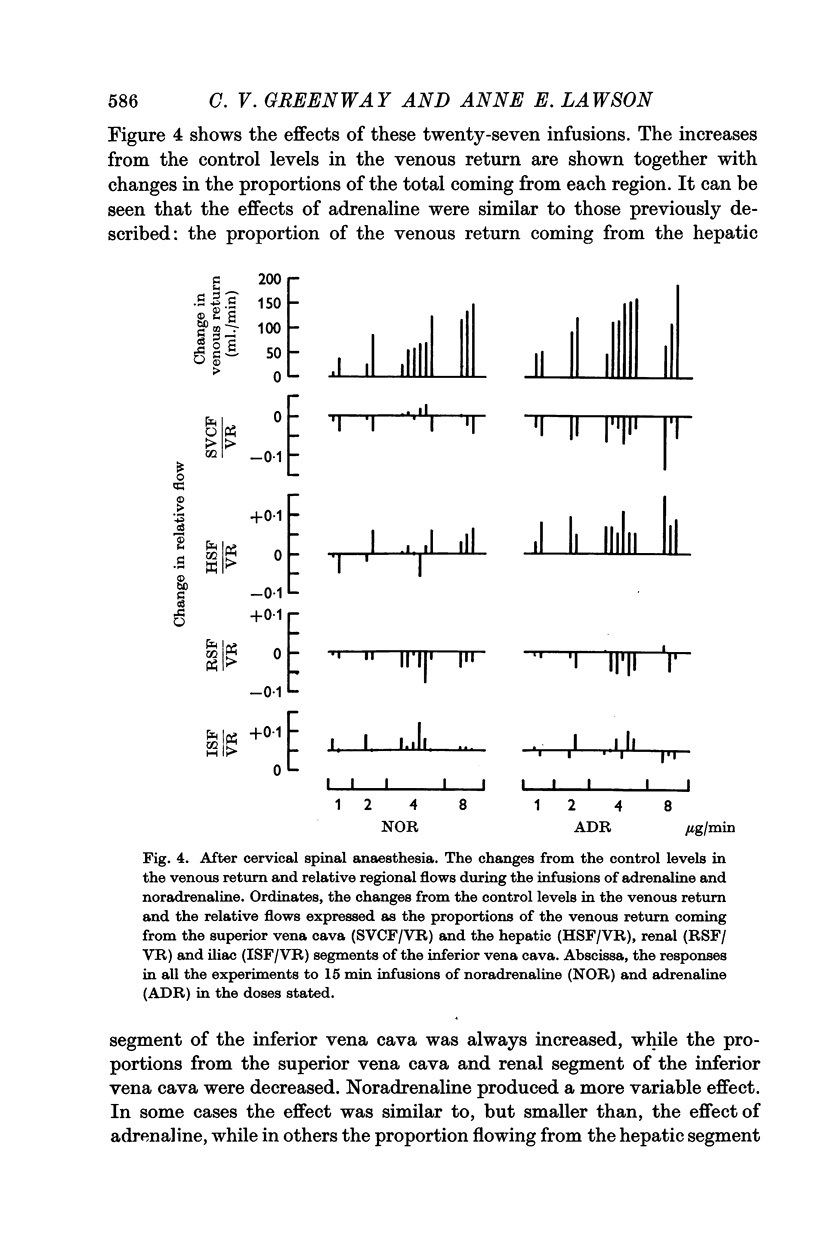
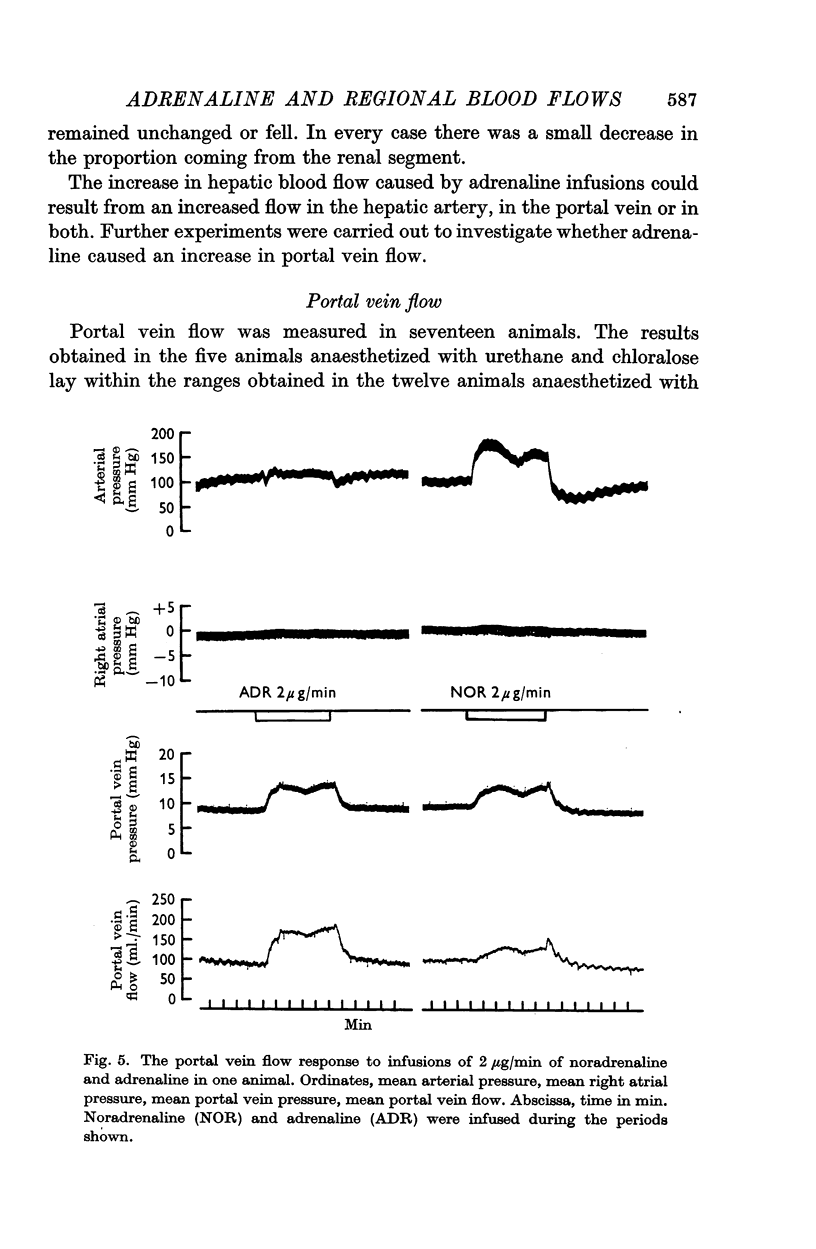
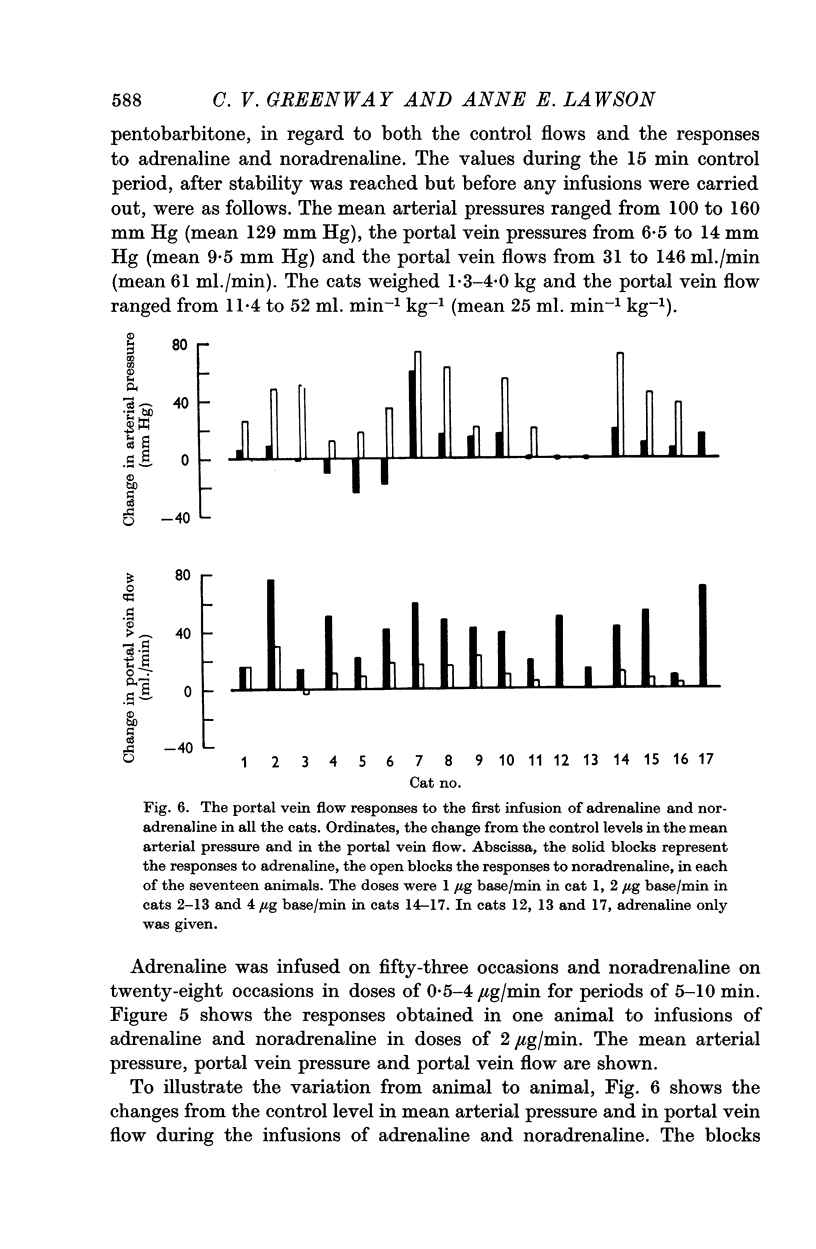
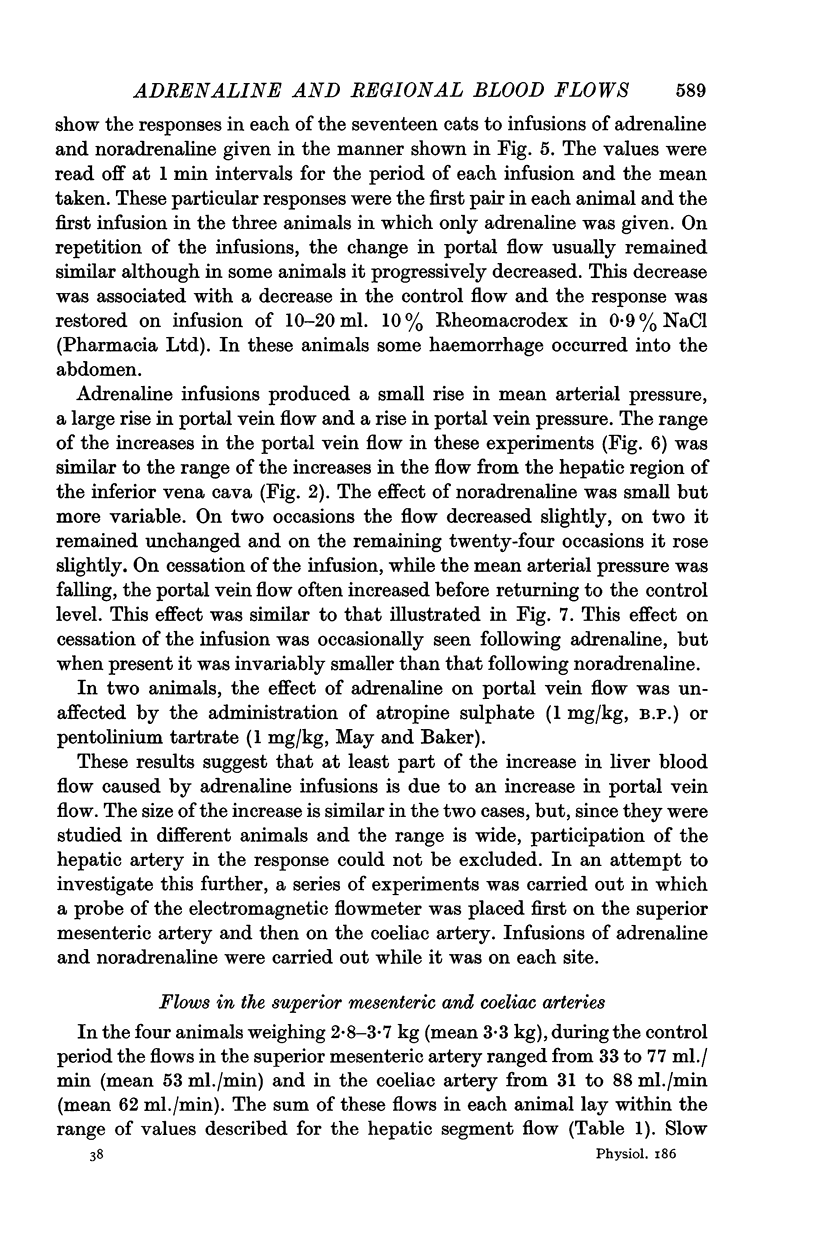
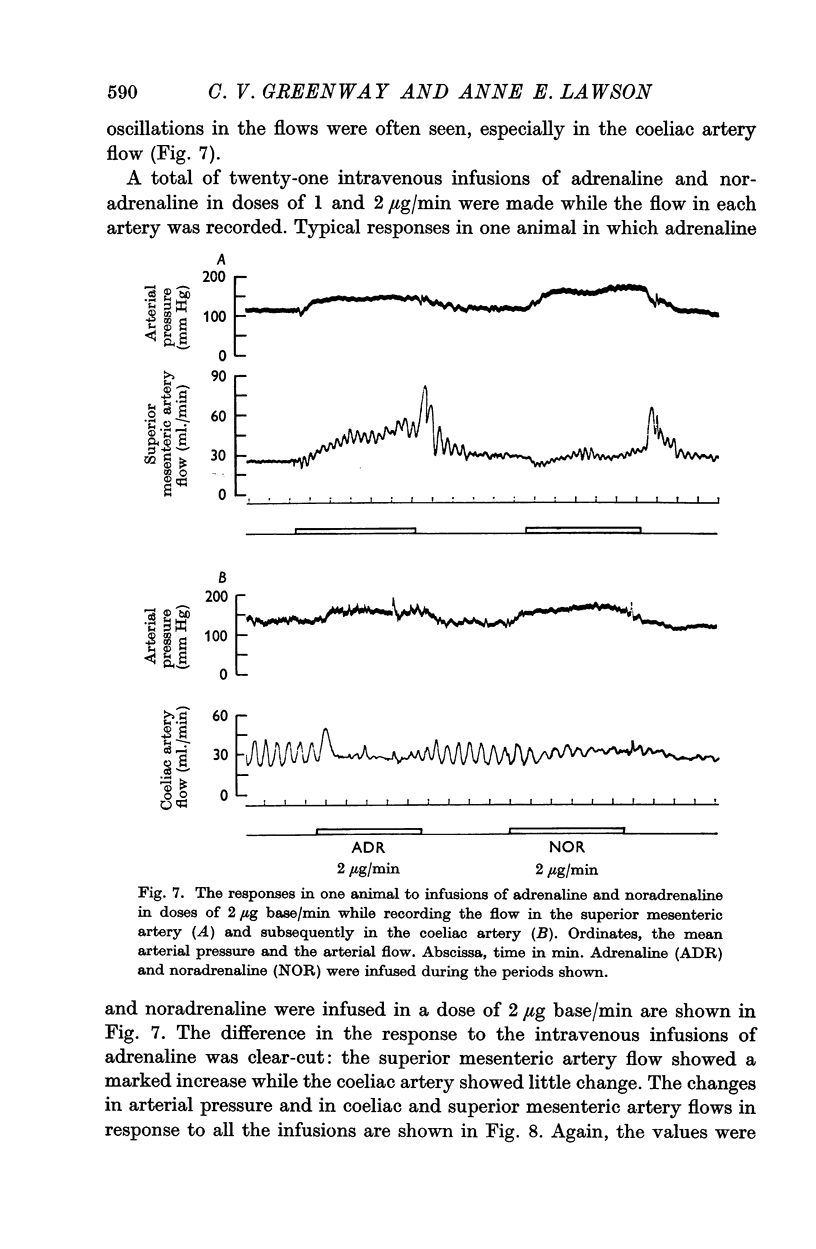
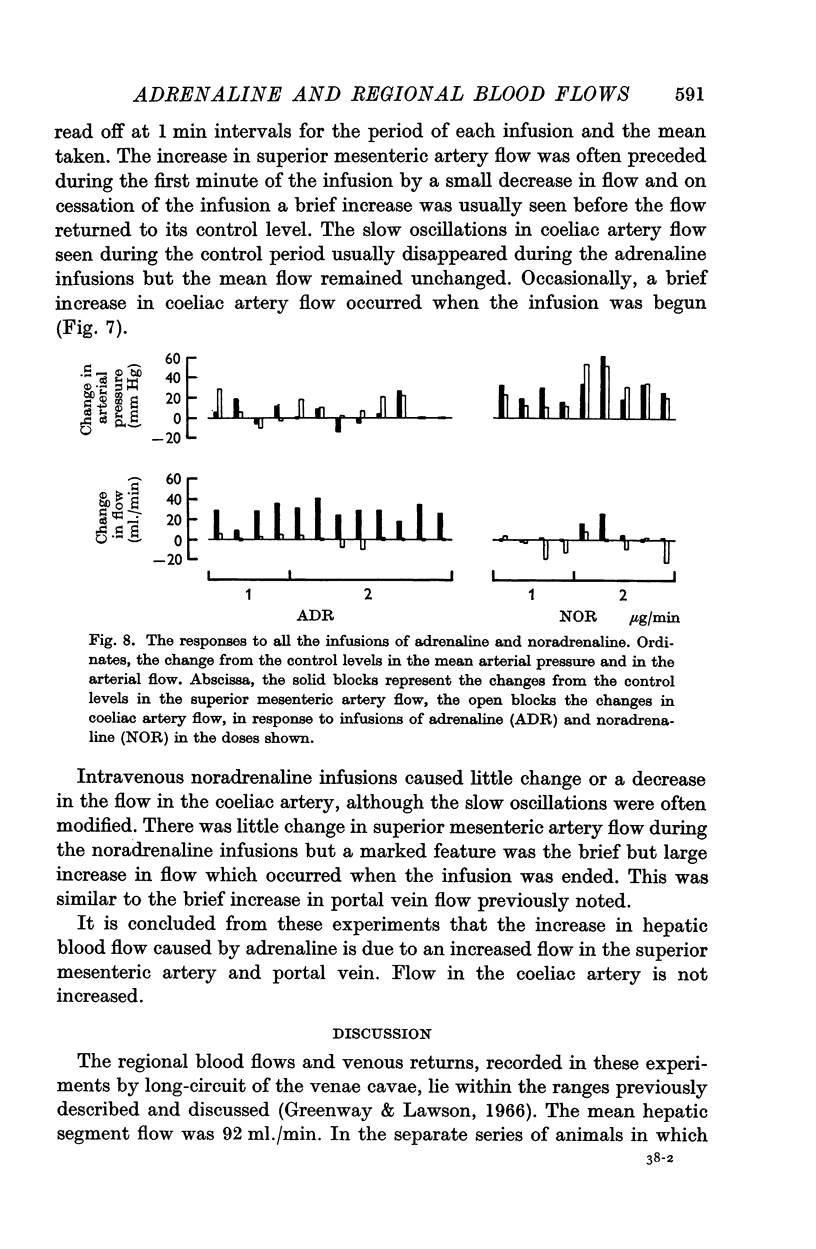
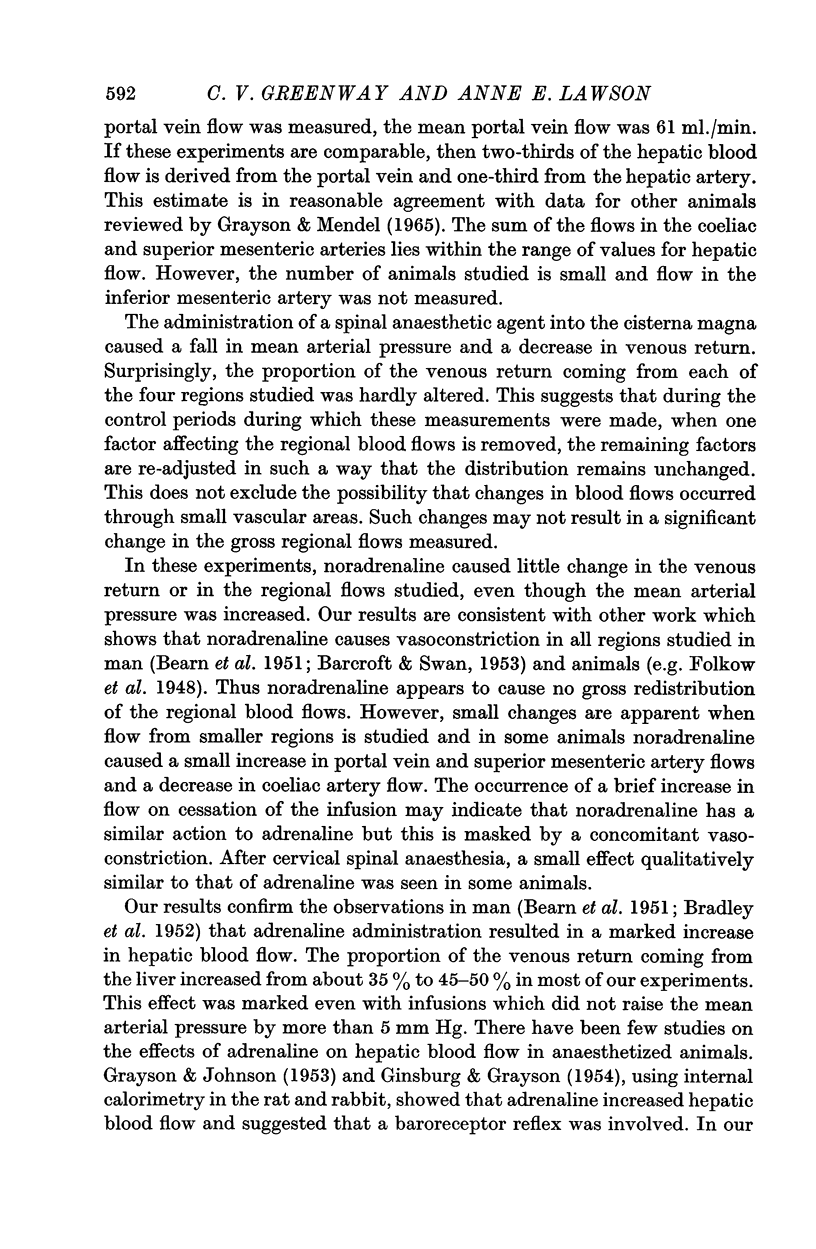
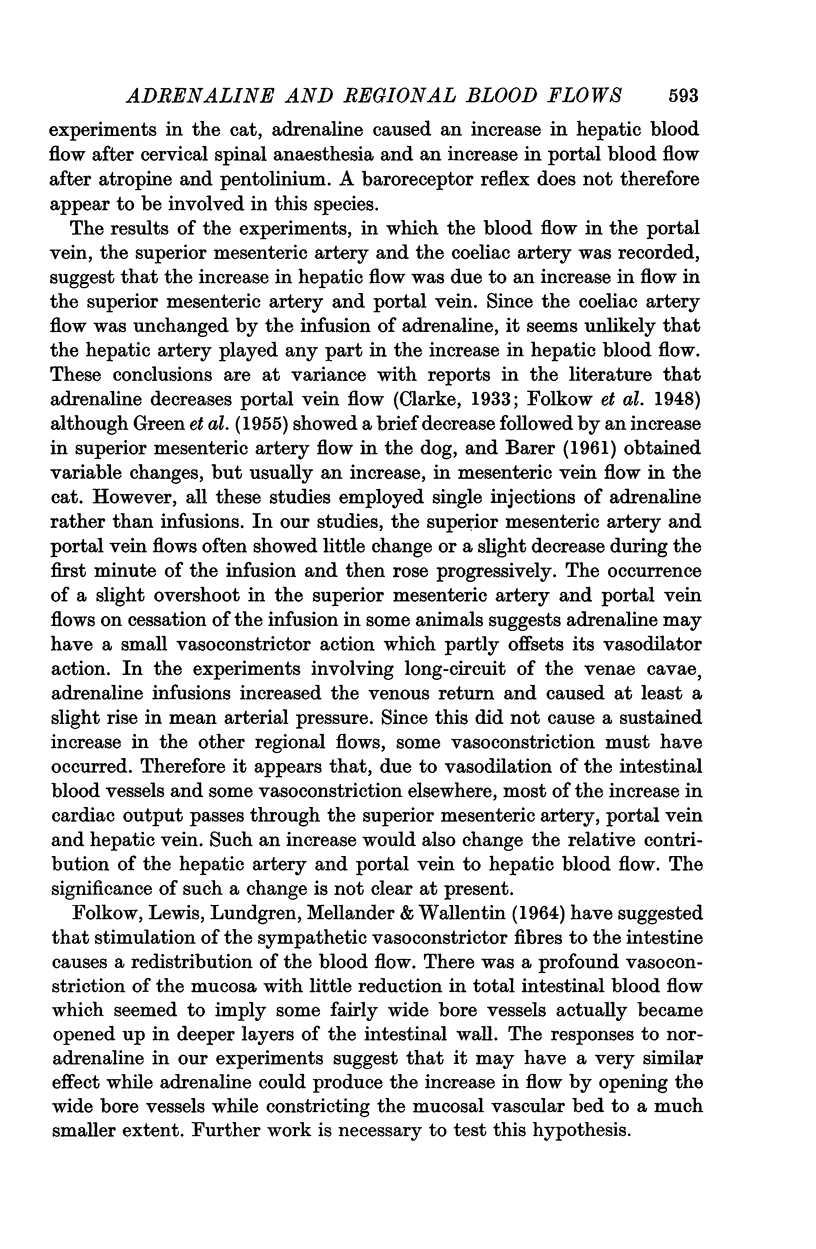
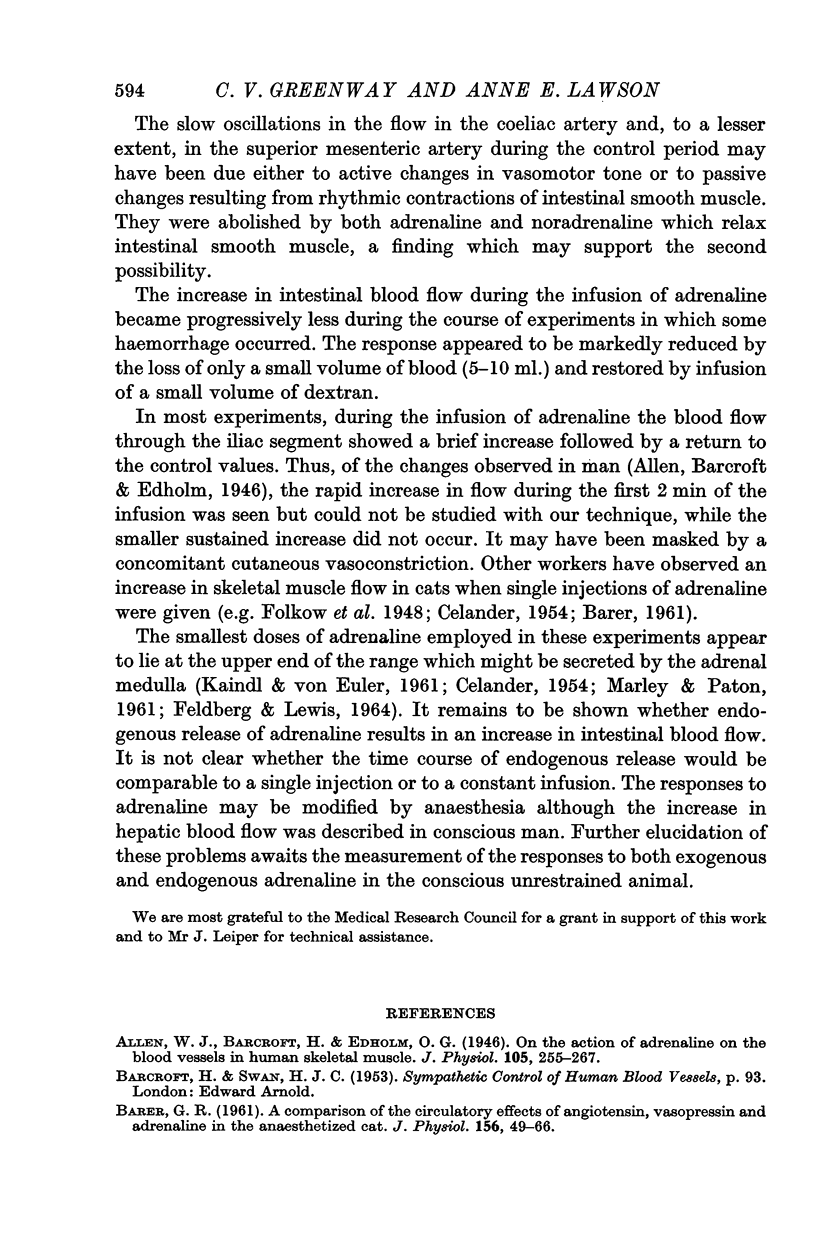
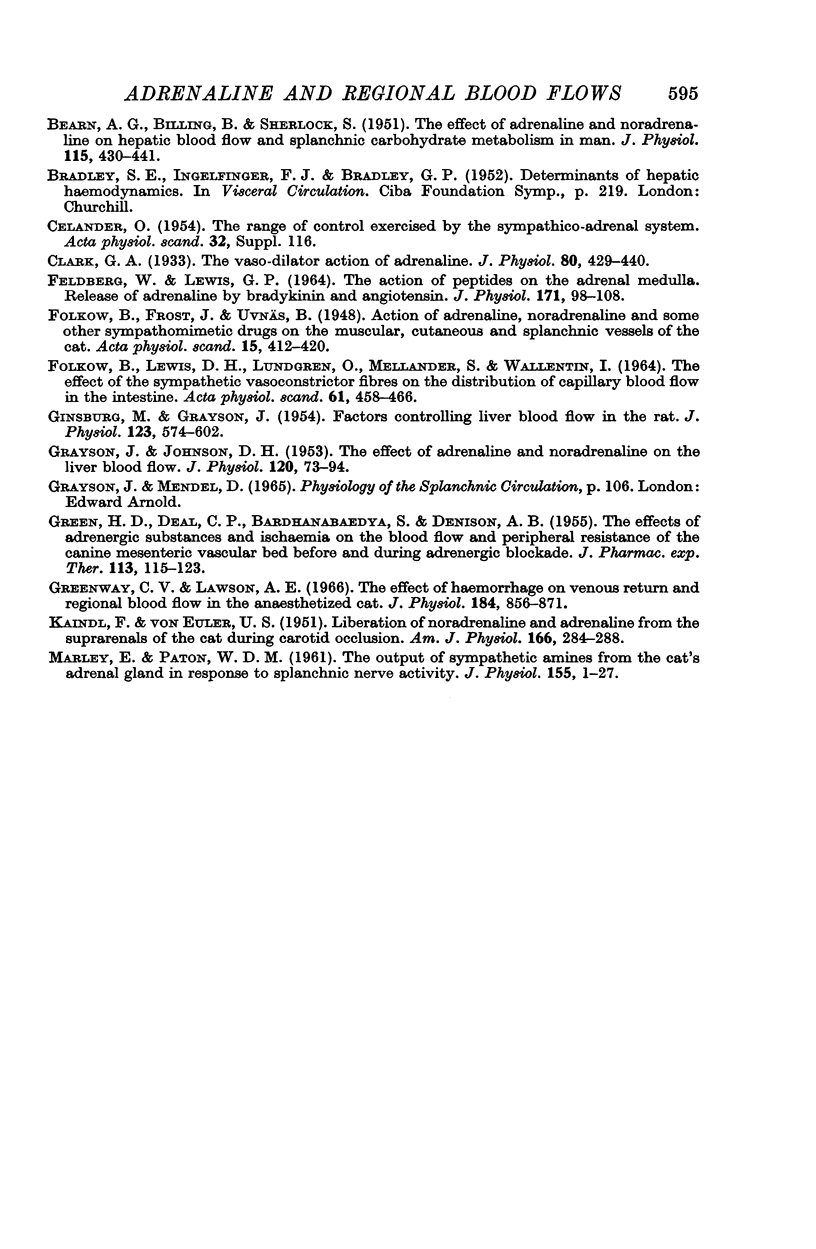
Selected References
These references are in PubMed. This may not be the complete list of references from this article.
- Allen W. J., Barcroft H., Edholm O. G. On the action of adrenaline on the blood vessels in human skeletal muscle. J Physiol. 1946 Dec 6;105(3):255–267. [PMC free article] [PubMed] [Google Scholar]
- BARER G. R. A comparison of the circulatory effects of angiotensin, vasopressin and adrenaline in the anaesthetized cat. J Physiol. 1961 Apr;156:49–66. doi: 10.1113/jphysiol.1961.sp006657. [DOI] [PMC free article] [PubMed] [Google Scholar]
- BEARN A. G., BILLING B., SHERLOCK S. The effect of adrenaline and noradrenaline on hepatic blood flow and splanchnic carbohydrate metabolism in man. J Physiol. 1951 Dec 28;115(4):430–441. doi: 10.1113/jphysiol.1951.sp004679. [DOI] [PMC free article] [PubMed] [Google Scholar]
- FELDBERG W., LEWIS G. P. THE ACTION OF PEPTIDES ON THE ADRENAL MEDULLA. RELEASE OF ADRENALINE BY BRADYKININ AND ANGIOTENSIN. J Physiol. 1964 May;171:98–108. doi: 10.1113/jphysiol.1964.sp007364. [DOI] [PMC free article] [PubMed] [Google Scholar]
- FOLKOW B., LEWIS D. H., LUNDGREN O., MELLANDER S., WALLENTIN I. THE EFFECT OF THE SYMPATHETIC VASOCONSTRICTOR FIBRES ON THE DISTRIBUTION OF CAPILLARY BLOOD FLOW IN THE INTESTINE. Acta Physiol Scand. 1964 Aug;61:458–466. [PubMed] [Google Scholar]
- GINSBURG M., GRAYSON J. Factors controlling liver blood flow in the rat. J Physiol. 1954 Mar 29;123(3):574–602. doi: 10.1113/jphysiol.1954.sp005072. [DOI] [PMC free article] [PubMed] [Google Scholar]
- GRAYSON J., JOHNSON D. H. The effect of adrenaline and noradrenaline on the liver blood flow. J Physiol. 1953 Apr 28;120(1-2):73–94. doi: 10.1113/jphysiol.1953.sp004874. [DOI] [PMC free article] [PubMed] [Google Scholar]
- GREEN H. D., DEAL C. P., Jr, BARDHANABAEDYA S., DENISON A. B., Jr The effects of adrenergic substances and ischemia on the blood flow and peripheral resistance of the canine mesenteric vascular bed before and during adrenergic blockade. J Pharmacol Exp Ther. 1955 Jan;113(1):115–123. [PubMed] [Google Scholar]
- Greenway C. V., Lawson A. E. The effect of haemorrhage on venous return and regional blood flow in the anaesthetized cat. J Physiol. 1966 Jun;184(4):856–871. doi: 10.1113/jphysiol.1966.sp007952. [DOI] [PMC free article] [PubMed] [Google Scholar]
- KAINDL F., von EULER U. S. Liberation of nor-adrenaline and adrenaline from the suprarenals of the cat during carotid occlusion. Am J Physiol. 1951 Aug;166(2):284–288. doi: 10.1152/ajplegacy.1951.166.2.284. [DOI] [PubMed] [Google Scholar]
- MARLEY E., PATON W. D. The output of sympathetic amines from the cat's adrenal gland in response to splanchnic nerve activity. J Physiol. 1961 Jan;155:1–27. doi: 10.1113/jphysiol.1961.sp006610. [DOI] [PMC free article] [PubMed] [Google Scholar]


